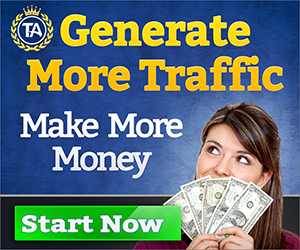The business world is constantly evolving, and terms that have been popular for decades often fade away and are replaced by new labels and phrases that appeal to the next generation. One term that has gained popularity over the past decade is “creator.”
Like “influencer,” it’s a concept that didn’t even exist a decade ago, but today has become an integral part of the business and marketing lexicon. This new generation of media, entertainment and advertising content creators has fueled the explosion of the creator economy. They are homemade and often have a huge social following that rivals the biggest brands and celebrities. They have strengthened their role as a crucial component in today’s economy by appealing to the human affinity for aesthetics and speed, which relies heavily on graphic design as it is essential to their long-term success.

What is a creator, and why does it play such an important role in today’s decentralized economy?
The Rise of the Creator Economy
Until a few decades ago, people who wanted to create music, commercial art, videos, and other content at a professional level had to be part of large organizations that had the infrastructure and tools to support their work. All you have to do is look at photos of recording studios from the 1960s and 1970s to see that making an album required hundreds of thousands of dollars in specialized equipment, which was clearly beyond the budget of even the biggest stars.
Today, the best-selling albums are literally recorded in the bedroom on laptop computers, and musicians can sell their songs through platforms like Spotify and Apple Music without having to press albums and print CDs.
This shift is the essence of the creative economy, in which power is shifted from organizations to individuals. Artists, writers and musicians can become their own brands and use social media to understand exactly who their audiences are and what they need to deliver.
The creator economy is an ecosystem that brings together vloggers, gamers, photographers and even startups to share their passion directly with consumers on a deeper level through digital media. That only democratizes connecting, but it has fundamentally rewritten the rules on the business side of the equation.

The pros
Successful creators do not have to rely on “middlemen” in any aspect of their activities. They manage their own social accounts, control their own subscription services, create and sell their own merchandise, and even manage payments without third-party involvement. This level of control would have been unthinkable even a decade ago, but by 2024 the number of creators is expected to explode to nearly 400 million people.
The cons
One of the downsides of the creative economy is that it is extremely difficult to cut through the chaos. There are literally tens of millions of songs on Spotify, which makes it difficult for new artists to get recognized and gain followers. That’s where a creative approach to marketing and branding is essential. And unlike twenty years ago, when a marketing agency would have done all the publicity and branding work, today the responsibility falls on the shoulders of the creators themselves.
Unfortunately, being a great musician doesn’t necessarily mean someone is a great marketer.
The good news is…
…that there are plenty of tools to help creators build their brands and increase revenue. One of the biggest is the rise of professional design services that allow everyone from vloggers to fashion influencers to create high-quality brands that can compete and gain traction in the global marketplace. For example, a startup candle brand can create an eye-catching logo, labels for their products, merchandise to complement their core SKUs, and a strong digital presence.
You don’t have to be a Fortune 500 company to look like this! In fact, you don’t even have to be a full-time creator to build a top brand. But if they have the right tools, makers can create designs they’re passionate about, and that are compatible with major e-commerce platforms like Shopify, Etsy, Merch by Amazon, and personal platforms.

Takeaway
There is no one magic button that turns a YouTuber into a global star or a musician into a household name. But by using cutting-edge tools to help them build their identities – and their businesses – I have the opportunity to play in the same ballpark as major global brands.













Leave a Reply